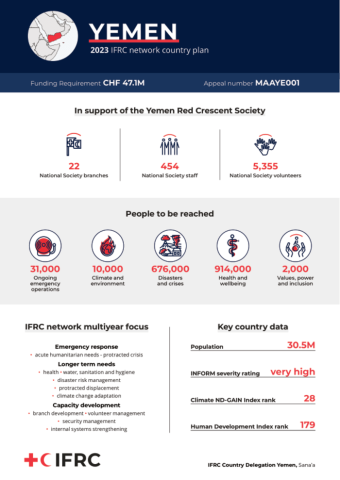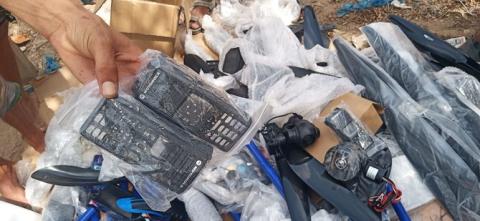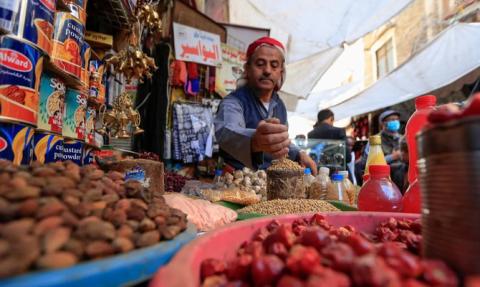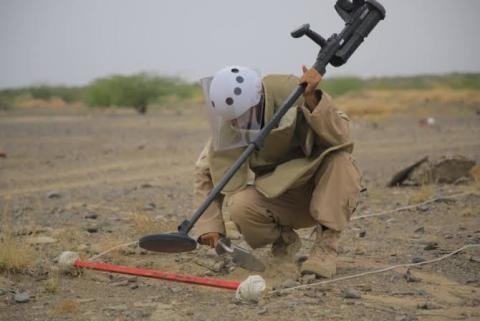Yemen truce may be renewed


It appeared likely this week that the truce in Yemen would be renewed. While there are still violations, mostly by the Ansarullah Movement (the Houthis), the chances of de-escalation are better under the new Presidential Council than they were under the former Abd-Rabbu Mansur Hadi government. Both sides have gained from the truce and its first extension and stand to gain from a second one.
The new Yemeni government has had the chance to consolidate and regroup, while the Houthis have benefited from access to fuel and the end of the air blockade. However, the sponsors of the truce now hope that the opportunity to renew the truce for a second time can be leveraged into a political settlement process, even if observers believe that there has not been sufficient confidence-building to proceed to that stage.
The US is believed to be acting as an indirect mediator pushing towards this end. A delegation from Muscat visited Sanaa last week following a series of US-Omani communications and parallel visits by US Special Envoy for Yemen Timothy Lenderking to Riyadh and UN Special Envoy for Yemen Hans Grundberg to Aden, the current seat of the Yemen Presidential Council.
In Aden, the head of the Presidential Council, Rashad Al-Alimi, refused to meet Grundberg to discuss renewing the truce. The snub was reportedly in protest against the situation in Taiz, where the Houthis have not fulfilled the provision of the truce calling on them to open roads to the besieged city.
In Taiz itself demonstrators called on the government not to renew the trucea. US Secretary of State Antony Blinken contacted Al-Alimi, himself a native of the Taiz governorate, in a last-ditch attempt to salvage the truce before its expiration.
The truce has given both sides the space to reorder themselves militarily with respect to conditions on the ground. The Yemen Command Council has set in motion an ambitious programme to overhaul the country’s security forces that involves restructuring in order to incorporate new components, such as the Southern Resistance Forces, under the command’s umbrella.
The Houthis have had the opportunity to reorder ranks and redeploy in the areas they control, to intensify recruitment drives, and to implement training programmes. According to some reports, they have sent “elite” forces to Iraq, Lebanon, and Syria to receive training from Iranian Revolutionary Guard Corps and Hizbullah militia commanders on how to operate missile and drone defence systems.
As was the case two months ago when the first truce approached expiration, mediators have been scrambling to persuade the Yemeni actors to renew it for a second time because of the opportunities it has afforded to improve the lives of the Yemeni people. Politically, the main motive for pushing for an extension is to promote a more durable ceasefire preparatory to launching a political settlement process to end the conflict in Yemen.
However, conditions on the ground reflect other calculations. The Houthis are banking on the normalisation of the de facto realities they have imposed in the areas under their control in the north. For the Houthis, the truce was not just a breathing space to consolidate and redeploy militarily, it was also a chance to re-fortify themselves politically, economically, and socially and to normalise life in the areas under their control.
For the other side, it is clear that a reversion to military escalation would compound the burdens on the Presidential Council. If it has to channel the resources of the liberated areas and outside assistance from the Arab Coalition into the war effort, the newly installed government would lose the confidence placed in it to bring change to a country that has been devastated by eight years of war.
The options before the new government appear limited. Rather than the choice between a military solution and a settlement process, it is presented with the choice between a military solution and acquiescing to a situation imposed by the difficult equations on the ground.
The Presidential Command Council, which has taken over command of the militia factions, is not given to espousing a logic of normalisation over military logic. Its priority is strategy, not managing reconstruction and development programmes, for which it would need to form a larger government. Strategy essentially entails resolving the central problem: the threat of the Houthi project.
Unless the council is equipped with the strength to definitively tip the power balance in its favour, it will never be able to rein in the Houthis. Bringing militias together with the army under a unified command is a major step, but it still falls short of a comprehensive military and security reform programme.
Current circumstances render such a programme unfeasible, especially since proper military training requires the transmission of the skills and knowhow needed to grapple with the evolving nature of the challenges on the battlefield and the unconventional modes of warfare that the Houthi forces are acquiring abroad.
Another important facet of any military/security restructuring and development project is an ideological component, namely instilling the esprit de corps of a modern professional army. This challenge is not insignificant, given the diverse regional, tribal, and political affiliations of the recently incorporated militias.
The potential risks of normalisation with the Houthis, or utilising a ceasefire agreement or settlement process towards that end, will emerge in the mid to long term. It is clear that the rigidly hierarchical and tightly supervised administrative bodies in the areas under Houthi control are indoctrinating a new generation of loyalists.
Regardless of whether or not the members of this generation are affiliated with the Houthis themselves, they are being instilled with a hatred for the Yemen republic and the legitimate government and with a culture of intolerance, violence and militancy.
Educational institutions have effectively been converted into indoctrination centres, even aside from the deplorable state of education in the Houthi areas. According to international indicators, the quality of university education has deteriorated beyond anything imaginable under the former regime. In primary and secondary education, the situation is even more catastrophic. An estimated four million children remain outside the educational system altogether, and schools have been turned into camps and recruitment centres.
Many observers have compared the Houthis’ educational policies to the era of the Zaidi Imamate that ruled Northern Yemen for centuries until its overthrow and the foundation of the Yemeni Republic in the 1960s.
UN reports suggest an improvement in the overall environment in the conflict zone, but concrete indicators on the extent and geographical layout of this improvement are lacking. This in turn raises the question of the effective and equitable delivery of relief to different parts of the country, especially in the light of the Houthis’ record in redirecting aid to certain areas in order to promote their interests.
Addressing these and other details is essential in order to differentiate between a resolution that merely aims to stop the fighting versus an approach that aims to grapple with its root causes.

Yemeni officials on Monday condemned arrests and prosecutions by the Iran-backed Houthi militia directed against media, journalists and celebrities…

Yemen's warring parties are gearing up for new waves of conflict in 2023 amid a lack of decisive steps towards sustainable peace, adding to the suf…

The UAE will help to recruit doctors and deliver crucial supplies for hospitals in Yemen under a major healthcare drive. The Khalifa bin…